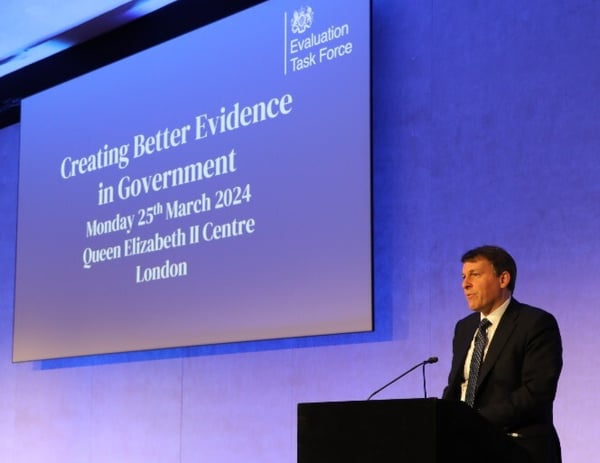The unrealised potential of open procurement data
By law, all contracting authorities in the UK need to publish procurement data: their latest tenders, who they’re awarding contracts to, and how much suppliers are invoicing them for.
Unfortunately, how this open data is made available is not strictly mandated or centralised.
As a result, a sea of invaluable data on public sector procurement is openly available to us all, but it is spread across an uncountable number of disparate and clunky portals, websites and archives.
In this disconnected and jumbled state, it’s near impossible to get a proper visualisation of how the public sector is spending taxpayer’s money on procurement.
This is a massive waste of potential insights - namely, insights that could help contracting authorities to make smarter procurement decisions, and save money.
Having collated and refined all publicly available procurement data into our own market intelligence platform - Tussell - we’ve come to appreciate the unrealised power that a joined-up view of the procurement data landscape can provide public bodies.
Below, we’ve condensed the key benefits contracting authorities stand to gain with access to a joined-up view of open procurement data, and why the public sector should make leveraging this a priority.
#1 You can understand your procurement categories inside-out
A category manager’s field of view over their categories is woefully restricted.
More often than not, understanding of a given category is limited to their teams’ anecdotal experience, word-of-mouth, and what they’re told by current or prospective suppliers.
This isn’t aided by the fact that it’s near impossible to get a holistic understanding of different categories through open procurement data. Split across hundreds of portals, patching together individual contracts and tenders to get a helicopter view of a category would take hundreds - if not thousands - of hours of work.
When this open data is consolidated together, procurement teams gain access to an unparalleled viewpoint over their category’s landscape: who its biggest suppliers are, what work is being awarded, and which routes-to-market are being used become clearly apparent.
When going out to tender, this vantage point is key to making more informed procurement decisions.
#2 You can enter supplier negotiations with confidence
Contracting authorities are always looking to get more value out of their supplier relationships.
When it comes to negotiating with suppliers - say, as to whether to go out to re-tender a contract, or renew it under different terms or pricing - it’s not uncommon for contracting authorities to feel underprepared.
With a consolidated view of the procurement landscape, you can very easily tell how reliant any given supplier is on you by seeing how significantly you figure into their public sector book of business.
If you know a supplier sources a majority of its public sector revenue from you, this serves as a significant source of leverage during contract negotiations.
#3 You can know exactly which framework agreements to use
Framework agreements have long been an information black hole in the public sector. It’s easy to find them online, but nearly impossible to comprehensively tell what’s going on within them.
This is because while data on frameworks and their associated contracts is technically openly accessible, it is almost entirely disconnected.
Once re-connected, procurement teams don’t need to fly blindly with frameworks. Matching call-off contracts to the frameworks they were awarded under enables teams to evaluate which frameworks their suppliers are on, what work has been awarded through them in the past, or whether they’ve been properly tried and tested.
#4 You can boost your procurement’s social value
All contracting authorities are looking to procure in more social value-conscious ways. A joined-up view of open procurement data can facilitate this.
Rather than viewing your authority’s procurement contract-by-contract, a holistic view helps you to evaluate how successfully you’re procuring with the likes of SMEs, VCSEs and locally-based suppliers, and benchmark your performance against similarly sized authorities.
Moreover, oversight over which smaller businesses your neighbouring contracting authorities are working with provides a ready pool of potential suppliers to reach out to and encourage into your own procurement processes.
#5 You can avoid wasteful procurement processes through joint procurement
It’s easy for procurement teams to work in a siloed fashion, consumed almost entirely by their own contracting authorities' issues and problems. What’s often forgotten is that other procurement teams are trying to solve for similar - if not the same - problems.
A joined-up view of open data allows your contracting authority to more easily identify which other authorities are wielding procurement to address these problems.
This oversight not only points you in the direction of which authorities to liaise with to discuss their experiences and generate potential solutions, but - crucially - helps you anticipate when others’ contractual solutions are due to expire. With this foresight, you can coordinate joining them in the solutions’ delivery once it is re-tendered or extended. This avoids the need to run a time and resource-intensive procurement process of your own.
The power of open procurement data is woefully underappreciated by contracting authorities.
By aggregating open data into joined-up, actionable and useful data, contracting authorities stand to access invaluable insights that can help them procure in more cost-effective and efficient ways.
Tussell’s market intelligence platform provides procurement teams with exactly this. To learn how Tussell could your team make smarter procurement decisions, book in a chat with us.





